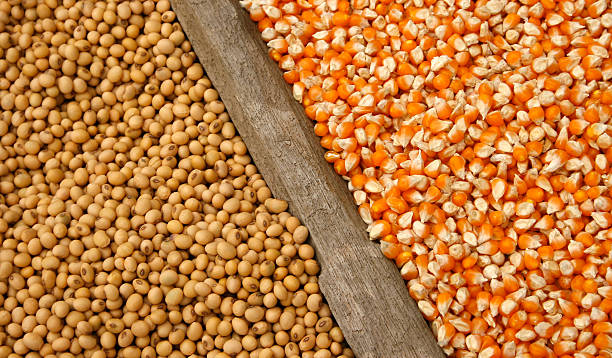With the US harvest concluding, markets will focus on South American weather forecasts and crop progress. For the 2023/24 marketing year, Brazil and Argentina are projected to account for 53% of global soybean production and 15% of global corn production. By comparison, the US produces 32% of the world’s corn and 28% of the world’s soybeans. Combined, these three countries dominate corn and soybean exports. The three countries account for 89% of soybean exports and 75% of corn exports. As such, production in these three countries has major implications for global prices. This article examines trendline corn and soybean yields for Argentina, Brazil, and the US.
Figure 1. Average Corn Yield by Country, 1977/78 to 2023/24

There are major differences between Argentina, Brazil, and US corn yields. Differences in corn yield can be partially explained by production practices, such as Brazil corn production occurring largely as a second crop after soybeans. For 2023/2024, US corn yield is projected at 173 bu/acre – 83% higher than the global average; Brazil at 90 bu/acre – 5% below the global average; and Argentina at 123 bu/acre – 31% above the global average (Figure 1). Trendline yields also reveal significant differences. Over the past 33 years, Argentina has added 1.92 bu/acre/year, the US has added 1.85 bu/acre/year, and Brazil has added 1.61 bu/acre/year. Since 2014/15, yields for all three countries have flattened substantially, with average increases of less than 0.25 bu/acre/year. Yield variation is also an important feature. Since 2000, Argentina corn yields have been substantially more volatile than Brazil or the US. Argentinian volatility may be partially attributed to a greater impact from extreme weather and economic instability in Argentina, creating greater challenges with input availability, cost, and utilization.
Figure 2. Average Soybean Yield by Country, 1977/78 to 2023/24

Soybean yields across the three countries are more uniform. Projected yields for 2023/2024 are 44 bu/acre, 53 bu/acre, and 50 bu/acre for Argentina, Brazil, and the US, respectively (Figure 2). Brazil has led the way with annual yield improvements, increasing trend line yield by an average of 0.69 bu/acre/year, followed by the US at 0.50 bu/acre/year, and Argentina at 0.29 bu/acre/year. Similar to corn, Argentina and US trend line yields have flattened in the past ten years; however, Brazil’s average yield gain has increased to 0.78 bushels per acre per year over the last decade. The variation in Argentina’s annual yields is significantly greater than that of Brazil or the US.
Yields (along with harvested acres) will be important in determining production in each country and potentially their share of the export market, particularly for soybeans, as a larger share of global production is concentrated in three countries. If yields are forecast below trendline it would be supportive of higher prices and vice versa. Changes in projected yield and production from USDA, CONAB (Companhia Nacional de Abastecimento, National Supply Company, Brazil), and private companies have the potential to influence market direction.
References and Resources
USDA Foreign Agricultural Service – Production, Supply and Distribution. https://apps.fas.usda.gov/psdonline/app/index.html#/app/advQuery
CONAB – https://www.conab.gov.br/












